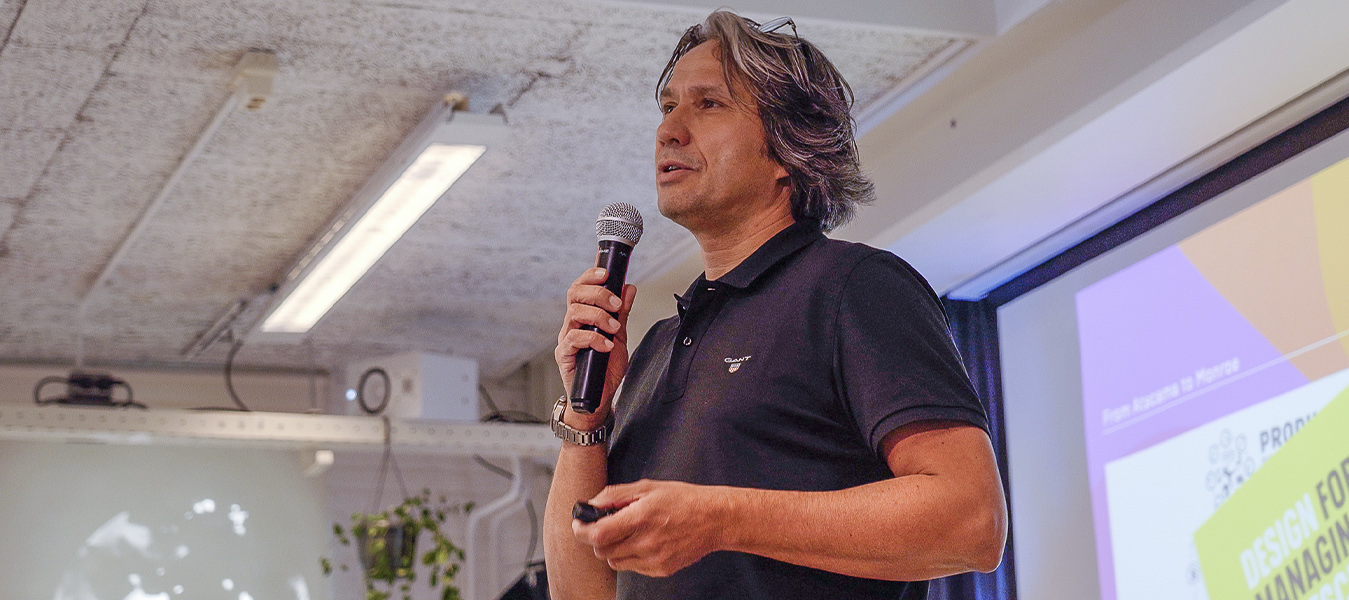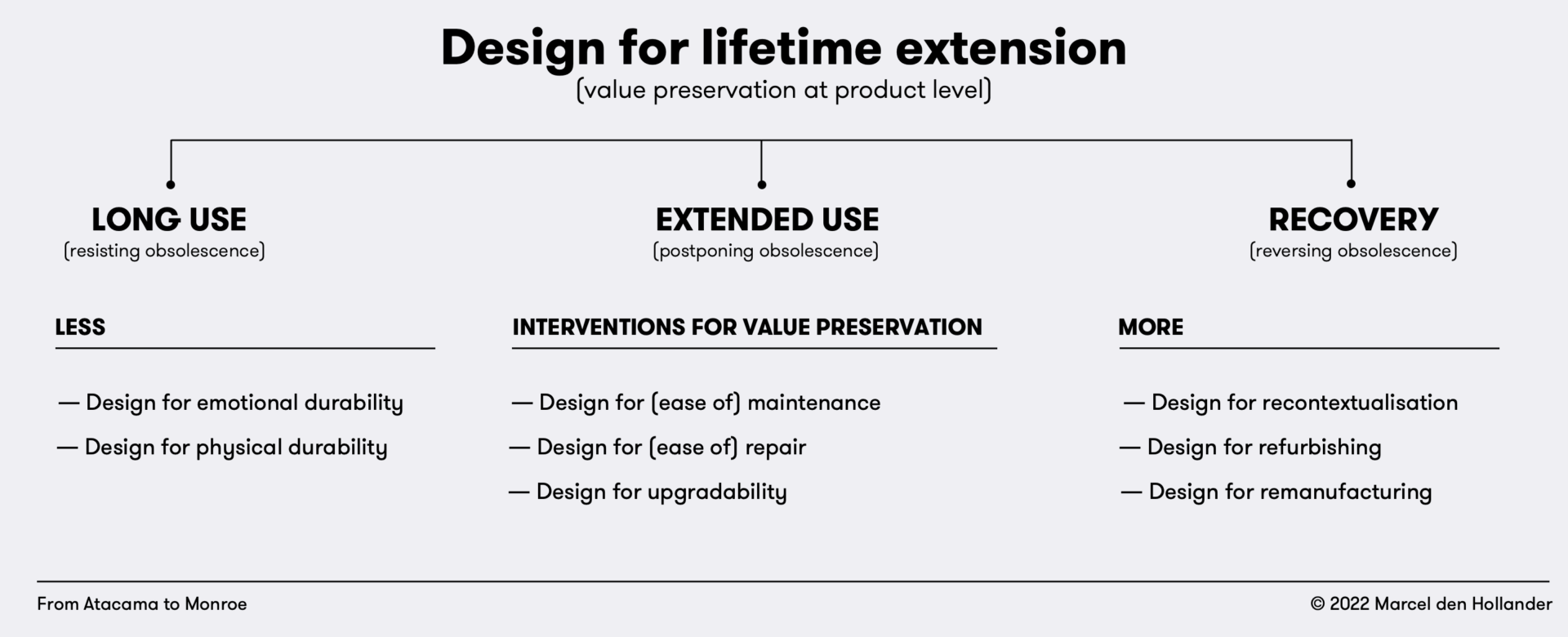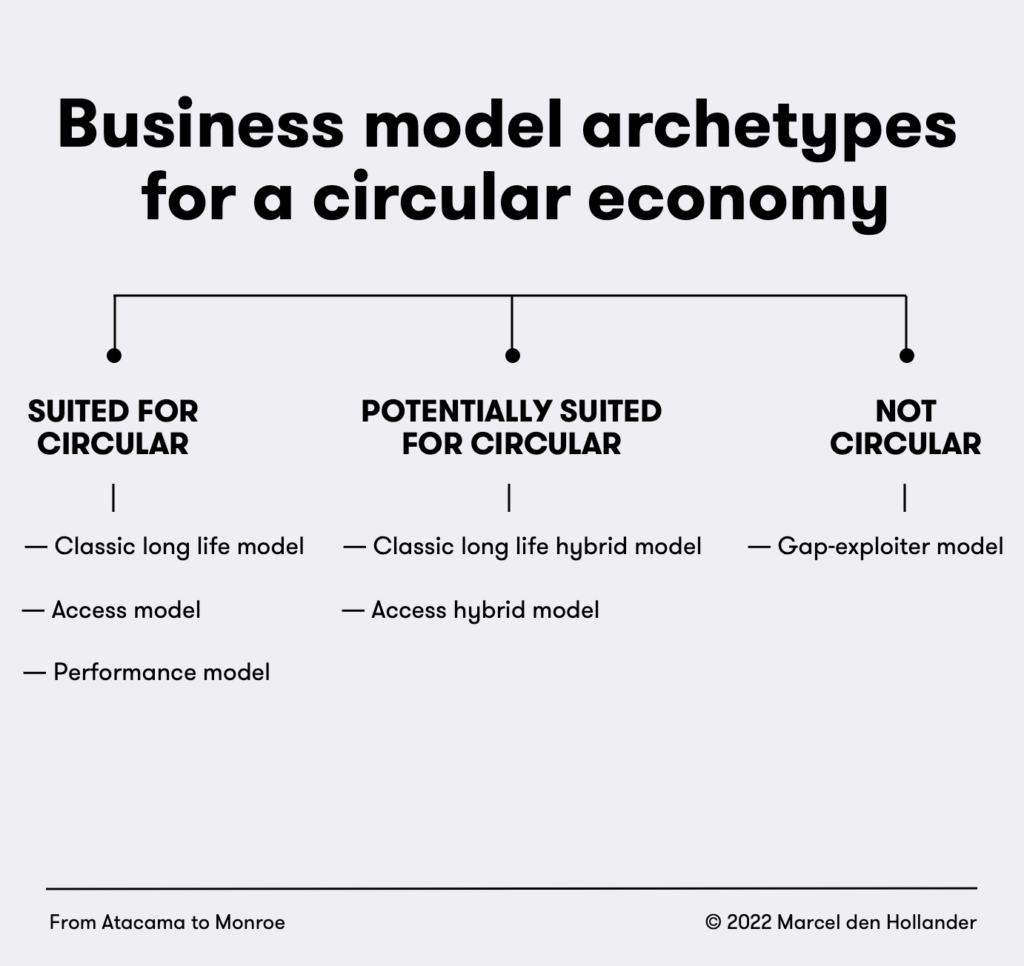Business Model Archetypes for a Circular Economy

99 % of all purchases become waste within 6 months from the date of purchase.
How to transition from goods that basically devalue, as you are looking at it, to goods that really keep its value over time? Circularity, in my view, is about perceived value over time. So how well do you manage to keep the perceived value of what you produce high over time? The reasoning behind that is, that if something has a perceived value, it has an economic value. As long as something has an economic value, it doesn’t disappear out of our economic system, it stays in our economic system.
And the less goes out of our economic system, the less we have to put in the front end in terms of materials and energy.
Design for lifetime extension, 3 ways:
- Design for long use: products that last a long time without any interventions.
- Design for extended use: products that need interventions from time to time, maybe repair or maintenance or upgrades.
- Design for recovery: products that can be exchanged between users or fulfill different purposes.

In a linear economy waste is allowed. In a circular economy there is no waste.
The best thing you can do basically to make the economic aspect work is try to reclaim as much of that value that you’ve been adding over time before you eventually have to put in all the expensive processes to recycle your stuff properly. So what can you do if you want to design for a lifetime extension?

I made a classification for what I call business model archetypes that will actually allow you to make money over time and again. Three categories with those that are really suited for circular. I'm not saying that if you choose any of those, you will be circular, but you have ones that are really suitable for circular. You have models that are potentially suited for circular, models that are never going to be circular. I include those because they are interesting from a transition point of view.
Examples:
Classic long life model - Patagonia
Access model - LENA the fashion library
Performance - Mud jeans
Gap Exploiter model - Repair centers & Swap shop
New circular economy, absolute sustainability, rule of thumb:
99% of the lifetime eco-impact of product-service combination is determined in the design stage of the value proposition(s), the product service combination and its business model context.
What I want to give you as a challenge:
Think about how you can design a series of value proposition(s) over time, ahead of time that are perceived by your customers as so valuable that they voluntarily give you permission to control the type and timing of recovery interventions over time to achieve Recovery -certainty*.
*Recovery uncertainty = you don’t know whether you get it back, you don’t know when you get it back, you don’t know how many of them you will get back or in what condition it is when you get back.